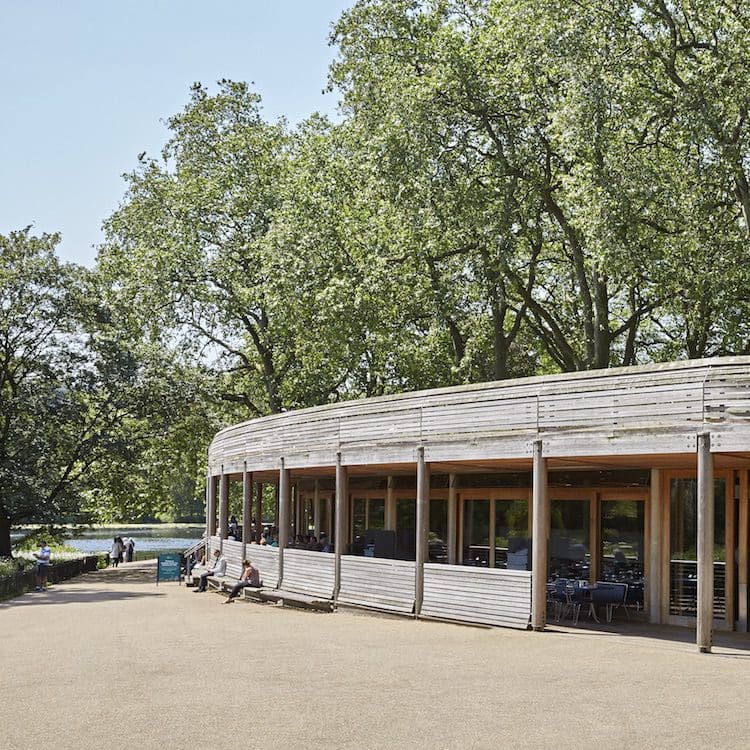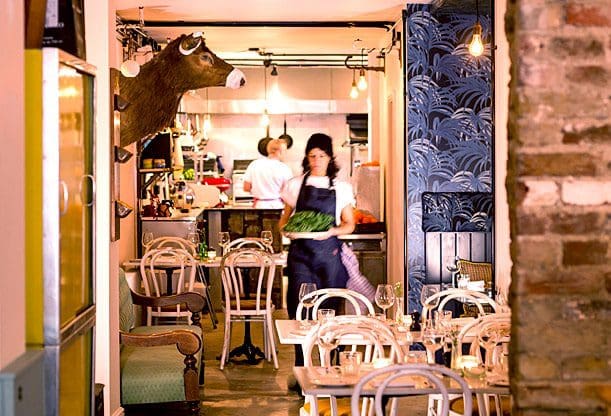words Alexa Wang
Get Ready to Whet Your Appetite for Food Halls.
Concept restaurants have sprung up in bustling European cities like London, Paris, Prague and Rome, and chic speciality food trucks have recently been setting fires in the hearts of foodies around the globe. But as these trends are fading, Moscow’s latest offering when it comes to culinary delights is taking off and shooting for the moon.
From affordable fine dining to hipster food-cart-style meals and bespoke restaurants, gastronomic quarter Depo in Moscow is taking food to the next level. This may not the first mall entirely dedicated to delicious food in the world, but nothing is quite like Depo.
Shining the Urban Spotlight on a New Type of Gastronomic Space
A boom in this new type of culinary experience has been trending in North America and has now shifted shores to Russia. The concept combines restaurants, food retail outlets, and leisure centers in a vibrant hub where there’s never a dull moment. A few years ago, gastronomic hubs were new for Russians, but, by 2019, more than a dozen have opened their kitchens, retail outlets, and entertainment facilities. Most of these malls are located in Moscow, but the trend has already caught on in St. Petersburg, where two large food malls appeared this summer. A gastro market has recently opened in Chelyabinsk and sparked interest in investors to explore options in Kazan and Omsk. Thus far, Depo is the largest, one of the most popular, and is seen as a game-changer when it comes to this new trend.
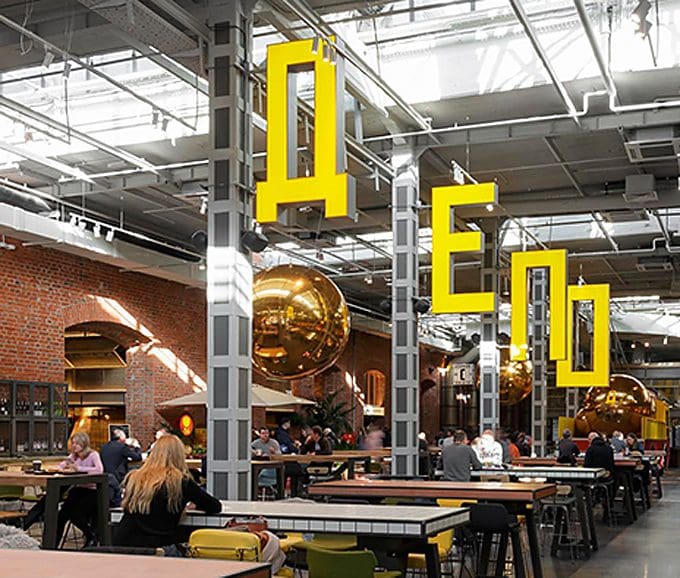
Hitting the Ground Running
In just a few months after opening, thousands of visitors enjoyed everything Depo has to offer – and the numbers just keep growing. When it opened in March, Depo received around 8,000 visitors a day, and by May at least 30,000 diners showed up over an average weekend. Co-owner of Depo, well-known businessman God Nisanov, has said that the first results exceeded investors’ expectations. Nisanov stated, “Honestly, we did not expect there to be so many people.” The businessman also announced his intention to launch another food mall based on this concept.
Transforming Industrial Spaces into Superior Food Hubs
At Depo, it’s possible to enjoy street food-style eating but without actually being on the street. Instead, visitors find themselves in stunning surroundings. The Depo quarter is an exceptional blend of industrial space and urban chic housed in historic neo-Gothic style red-brick buildings with high ceilings, massive windows, and sprawling open spaces. Originally the Miussky Tram Depot, the number of buildings was extensively renovated, making it 100% unique. Depo.Moscow is not the first food mall in Moscow to be created in an abandoned or old factory building. One of Moscow’s largest food hubs was started in an old textile factory and another one in Chelyabinsk is situated in a former mechanical engineering plant.
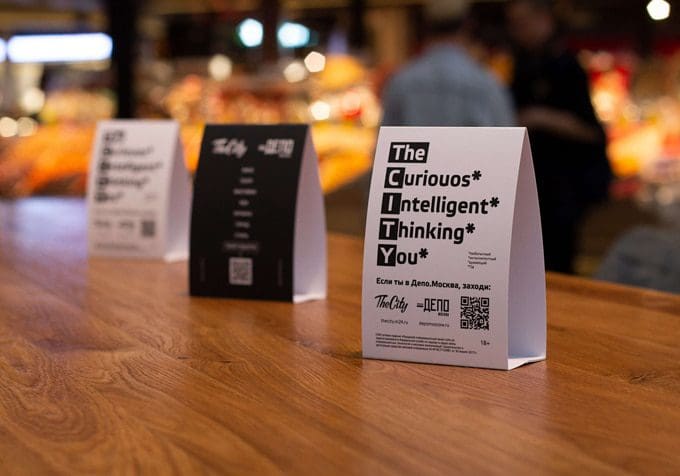
It’s About Meeting and Sharing the Pleasures of Eating
This gastronomic hub is geared for enjoyment. It is not just a place to eat and go. Food is increasingly being seen as food culture and it’s becoming more and more common to talk about dining experiences and to share it on social media. With a combination of distinctive architecture and outstanding dining options, Depo has become a highly “sharable” space when it comes to contemporary gastronomical culture.
The vendors at Depo are hand-picked for being the best at their game and preference is given to young and creative startups, offering them an opportunity to share their own unique culinary treats with the foodies of Moscow and visitors to the vibrant city. One of the main goals is to offer diversity. The price range and selection of cuisines are wide and varied, and visitors flock for superior leisure options and opportunities to try out new dishes, appreciate international cuisine, and improve their gastronomic culture as a whole.
Cashew mousse anyone? Balifornia serves up guilt-free meals for those who prefer their cows to be grazing for fodder instead of being served as food. And for foodies who can appreciate beefy goodness, there is Meat Dealers – a meat restaurant with its own butchery where visitors are “entertained” by watching all stages of meat preparation. There’s also a Texas-style diner specializing in chicken wings and nuggets where guests are challenged to eat as much as possible to earn a space on “The Wall of Chuck” (Norris). And despite the massive range, all restaurants at Depo have a few things in common: fresh, high-quality ingredients and outstanding ambiance.
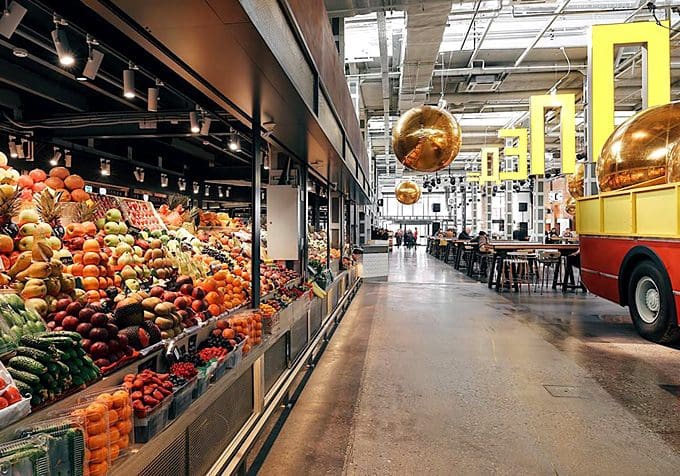
From Horse-Drawn Streetcars to Specialized Restaurants: Keeping History Alive
Depo was developed by Kievskaya Ploshchad, a commercial real estate development firm owned by God Nisanov and Zarakh Iliev. Construction on the building that dates back to the second half of the 19th century began in 2017. The rich history of the building includes a time when railways were horse-drawn and continued to the 21st century when the depot was closed and fell into disrepair. Kievskaya Ploshchad started extensive renovations with the goal of not only launching a state-of-the-art food facility but to make yet another contribution to preserving the cultural heritage of Moscow.
In recent years, Nisanov and Iliev’s company also completely renovated the iconic Hotel Ukraine, which was relaunched under the popular Radisson brand. The business partners also restored its unique collection of paintings by the masters of socialist realism at their own expense.
An Intricate Restoration Process
The total area of gastronomic quarter Depo is 25,000 square meters and the Depo.Moscow food mall occupies 11,000 square meters. As Kievskaya Ploshchad began the restoration, five of the seven buildings were recognized as cultural heritage sites. All of them were built in the same British Art Nouveau style that characterized Russian industrial architecture at the end of the 19th century. “When we started the project, we thoroughly studied the history of the Miussky depot and materials used to construct it,” said Nisanov. “The most talented specialists were involved in the work. And now, all the buildings are almost perfect replicas of the originals, which were designed by architects Mikhail Gleining and Nikolai Sytenko. This process made it possible to maintain the buildings’ status as cultural heritage sites of Moscow.”
Moscow Mayor Sergei Sobyanin, who attended the opening of Depo, described it as “a vibrant public space.” According to the mayor, food malls now play an important role in creating a comfortable urban environment and shaping a “new identity for Moscow.”

